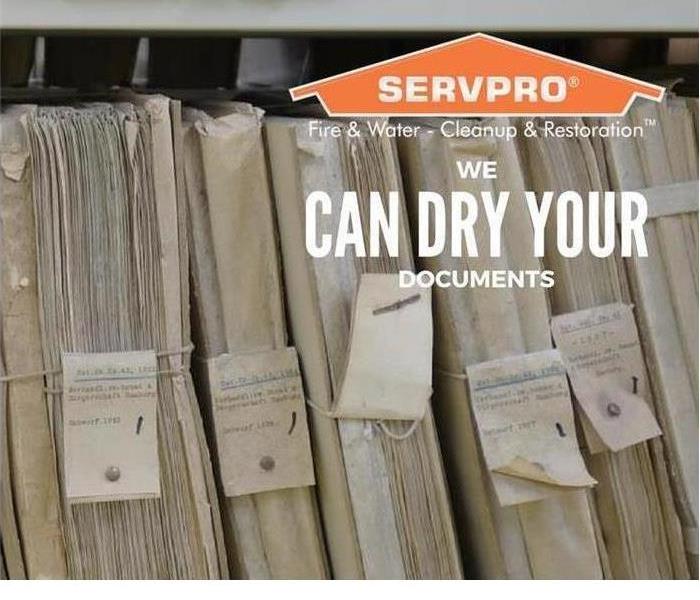How do we dry water damaged books and documents?
5/1/2019 (Permalink)
The focus in document and book drying is to stop further damage and dry items to the best possible condition. Five methods are used for document drying:
• air drying,
• dehumidification,
• freezer drying,
• vacuum freeze drying,
• vacuum thermal drying.
Selecting the appropriate method for document drying involves various considerations: type of water involved (clean, gray, black), extent of damage, time of exposure to moisture, funds available for recovery, and resources (personnel and equipment). Convey to the customer the expense involved in each drying option since document drying can be a costly service. Extended drying times are required for document restoration, often delaying return of the materials. The first step in drying is to store the wet documents and books in a freezer facility. Freezing documents as soon as possible, preferably within 24 hours of the loss, stops damage from continuing to get worse and allows time for you to determine what drying procedure will be effective. When the inventory and pack-out phase begins, the customer should be onsite to prioritize the material, identifying what is most important to dry. Make an inventory of documents being removed from a facility because lost articles can damage customer relationships. Maintain a log of the location of stored items, since someone inevitably will need to retrieve a document. The inventory log will help locate specific items quickly.




 24/7 Emergency Service
24/7 Emergency Service
